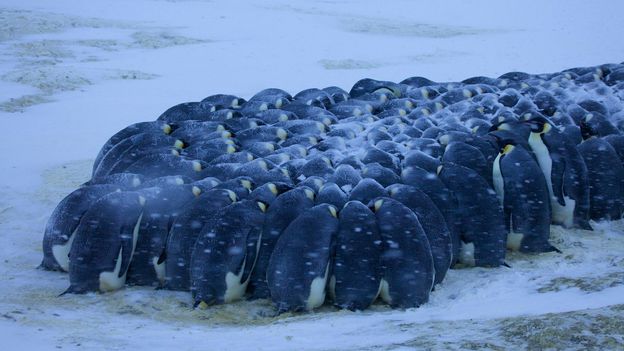
Nature Notes.
Storm Babet has finally abated after several days raging round the clock over a week ago, but Storm Ciaran is now waiting in the wings. Our wind and rain-lashed land and its inhabitants have suffered recently from severe flooding so I hope your bees have come through it unscathed. I made sure that my four overwintering poly nuclei were well strapped down, and all seems well now on a calm dry day that promises sunshine in the afternoon. Piperhill is elevated as the name implies, and living here means we are not at risk from immediate flooding but the River Nairn was in spate and dangerously high recently.
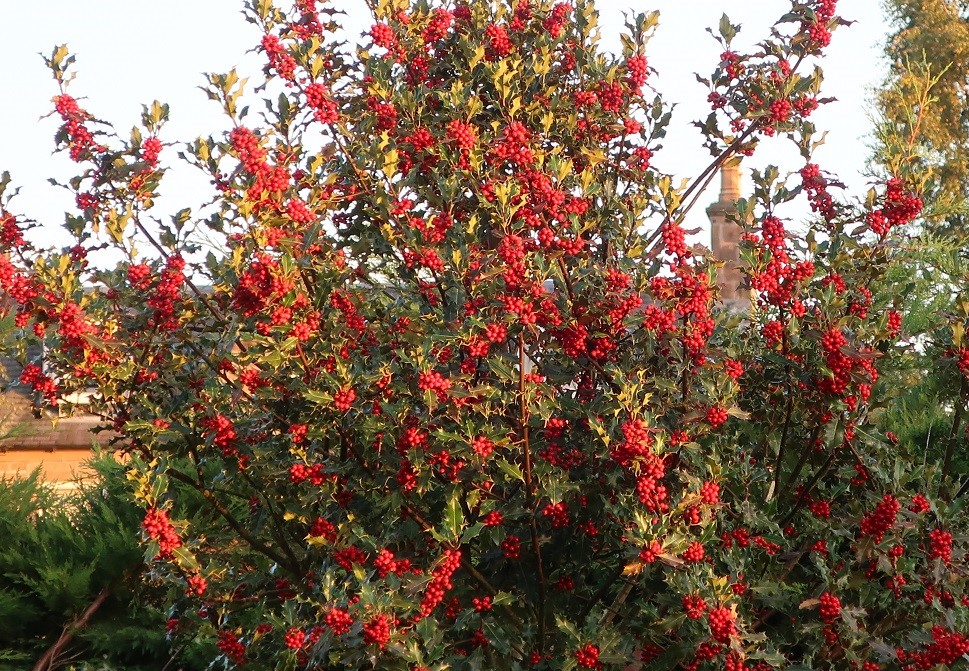
The holly tree out front is resplendent in blood-red scarlet berries that will be stripped bare in a couple of days. Never before have I seen so many berries on this tree. Blackbirds and redwings fed ravenously in the driving rain yesterday as if their lives depended upon it. I watched them in awe through binoculars from the comfortable shelter of the sitting room where the stove glowed warmly. These birds strategically perched themselves on branches and efficiently stripped bare all the greenery within reach. The muted red patches below the birds’ wings pleasingly compliment the holly berries and they make a fine sight in the setting sun.
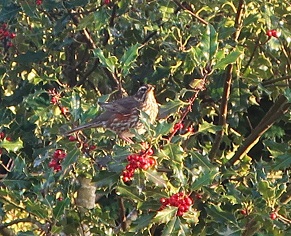
Redwings (Turdus iliacus) are members of the thrush family and they come south from Scandinavia for the winter. I often see them feeding with fieldfares on berries in the woodlands. There was something very satisfying about watching these birds feed outside our house, although I admit it would have been great to have had the berries on show for Christmas. It felt like I had a small bit part to play in the unfolding drama that started in spring.
On May 22nd, the holly tree was in full bloom and absolutely humming with buzzing insects. I stood below the tree noticing nearly every flower covered in honey bees and other pollinators feeding as urgently as the birds are doing now. This went on for a week or so and soon afterwards the results of pollination were visible in tiny green buds that later transformed into abundant red berries.
Adjusting Beliefs.
Science enables us to adjust our beliefs as new discoveries are made but sometimes it takes a long time for new information to become common knowledge and reach a beekeeper. For example, several years ago, what we commonly call Nosema spp. was reclassified as Vairimorpha spp. but I haven’t heard anyone use the new name and only once recently have seen it written in a recent journal article. I thought that you might in interested in a couple of things that cropped up as I was reading the journals and comments on social media.
Like Penguins?
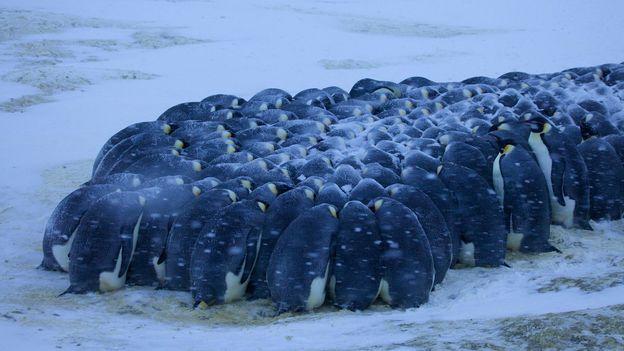
When I was learning about the how honey bees overwinter I was told that bees inside the centre of the winter cluster changed places with their sisters, like penguins do, to give the outer shell bees a chance to get warm on the inside? It seems plausible but Mr. Mobus1 suggests it is much more complicated than this simplistic explanation. He studied overwintering bees at The North of Scotland Agricultural College at Craibstone in 1976/77 and concluded that the bees in the centre of the cluster didn’t need extra warmth and they weren’t producing heat either. They were resting and their metabolic systems were idling as it were. Because they were not using and metabolising honey, there was very little metabolic water loss, and they were evaporating more water in the heat of the centre than they were producing. So, they were becoming thirsty and dehydrated and needed water which they could only get on the outside of the cluster. Conversely, as the inner bees became thirsty, the bees on the outer shell became colder and ate more honey to generate heat which in turn produced a lot more water than they could evaporate in this colder region. So, the soggy outside bees needed to swap places to “dry off” inside the warm centre therefore the changes and behaviours appear to be survival-based moves to correct water balance rather than unselfish behaviour based on altruism.
Smoking Stories.
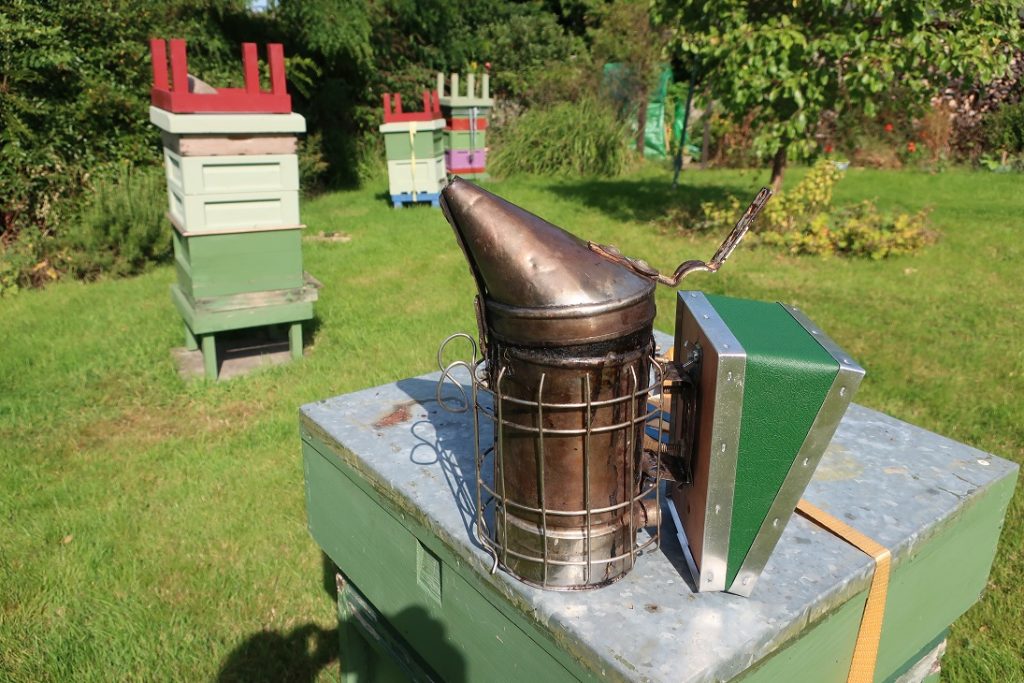
Some beginner beekeepers are told that smoking the hive entrance makes bees engorge themselves with honey as an evolutionary response to forest fires so that they can flee danger and fly off to a new nest. We know that heavily fecund queens are not generally able to fly unless slimmed down for swarming, so the flying part is highly unlikely. Smoking bees encourages the workers to take on board a load of honey and they are then less able to bend their abdomens to the stinging position. Smoke also does a good job of masking alarm pheromones which means that we are less likely to be stung during colony inspections.
African Research.
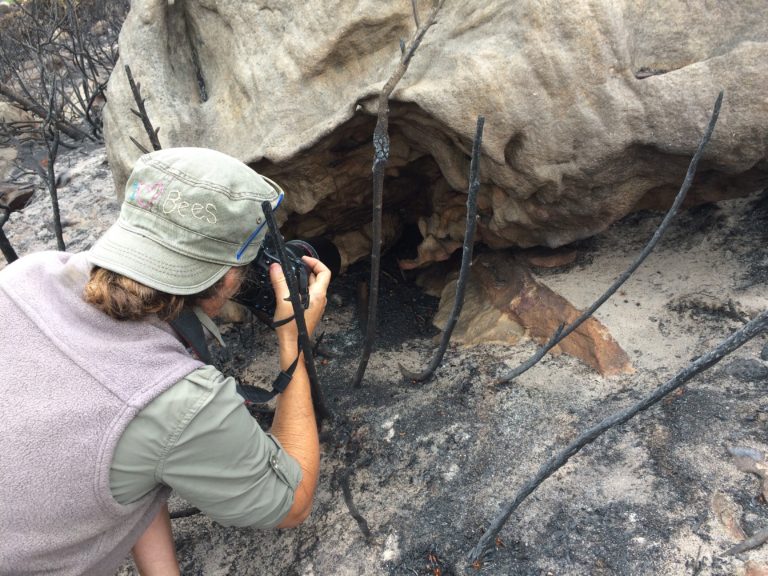
Interesting research in South Africa by Sternberg et al disproves the flight theory, and demonstrates evidence that the Cape honey bee will engorge with honey and move to the back of the nest, which is often in a rock cave, to wait out the fire. Sometimes they survive the fire and it is the heavily propolis-coated back wall that offers protective insulation https://ujubee.com/?p=417
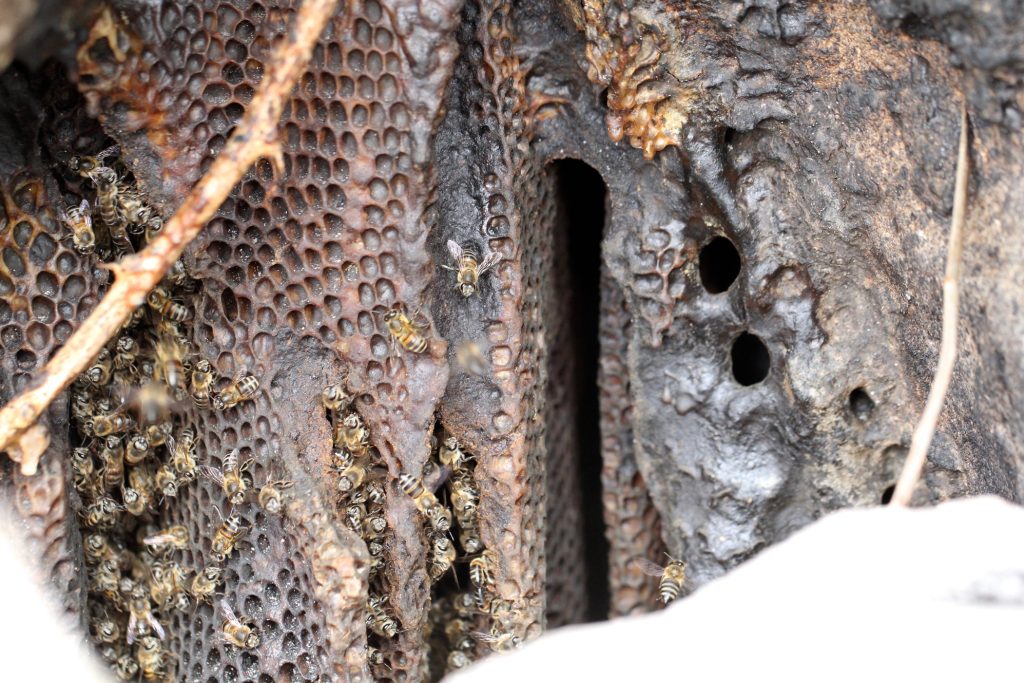
Antibiotics for EFB: Why Not?
Why do we no longer use antibiotics in the UK for treating European Foulbrood (EFB)? This is a topic questioned and debated on social media because beekeepers want treatments for disease which impacts commercial operations negatively. Previously Oxytetracycline (OTC) might have been prescribed by a UK Government Bee Inspector, but we have come a long way in recent years with new knowledge shaping management. We are lucky that honey bees just happen to be the most researched animal on the planet, and a lot of resources are currently going into making improvements in apiculture.
With recent advances in science, it is possible to study DNA sequence typing for the foulbroods and work out where the infections originated. Did you know that there are 35 different types of EFB in the world, and in the UK, there are around 19 types? When samples of EFB are taken in the field they are sent back to the lab for DNA sequencing and patterns emerge showing clusters of various types in different parts of the country. You can access disease maps at BeeBase https://www.nationalbeeunit.com/diseases-and-pests/reports-charts-and-maps/disease-incidence/
The spreading of different EFB types across counties indicates transfer of the disease which might happen as a result of moving bees to other areas. Some of the EFB types are resistant to antibiotics which is why they are no longer used. They were never highly successful anyway with a 50% chance of recurrence after treatment with OTC. 70% of the strains benefit more from destruction than others, but shook swarms are useful treatments with less than 20% chance of recurrence after effective management. For more information on sequencing foulbrood types and colony management, you can listen to Dr Kirsty Stainton’s informative lecture here https://www.youtube.com/watch?v=z0B9o4GHq7U
An interesting literature review by Moharrami et al (2) highlights the significant role of the honey bee gut microbiome in protecting against bacteria; specifically AFB and EFB. The gut bacteria of the honey bee has an important role and affects behaviour, nutrition, immune responses and homeostasis (maintaining a balance), and disease tolerance. The authors point out that, apart from creating resistance, the wide use of antibiotics can trigger an imbalance of the gut microflora that can decrease the life of the bee, and increase the risk of contaminating honey. Interestingly, gut microbes have an important role in transforming nectar to honey, and plant resin into propolis.
Reference.
1 Mobus, B. (1998) Rethinking Our Ideas About the Winter Cluster Part 2, American Bee Journal, October 2023, pp.1139-1143.
2 Moharrami, M., Mojgani, N., Bagheri, M., Toutiaee, S., (2022) Role of Honey Bee Gut Microbiota in the Control of American Foulbrood and European Foulbrood Diseases, Archives of Razi Institute, Vol. 77, No. 4 (2022) 1331-1339.

This was such an enlightening read! Beekeeping is a fascinating world, and it’s great to see someone taking the time to delve into the beliefs and practices surrounding it. It’s remarkable how our perceptions of beekeeping have evolved over time, influenced by culture, tradition, and scientific knowledge.
As the post highlights, I believe that the combination of traditional wisdom and modern scientific understanding is essential for the sustainable and ethical practice of beekeeping. Bees play a critical role in pollination and maintaining biodiversity, so it’s vital that we care for them in the best possible way.
Hello David. Thank you for commenting and contributing.
hy
Great new (to me anyway) info about the winter cluster. Thanks Ann.
Hello Neil. This was news to me till I opened the AJB last month. A great mag. Thank you for commenting.
Very interesting article Ann about the huddle of bees in winter to do with water and survival. They are so fascinating. Also about the microbiome of bees being damaged by antibiotic overuse exactly the same in humans. When the microbiome in humans is out of balance then they are more likely to have a diminished immune system. Thank you again for all the information you research and generously share. Susan
Hello Susan. Glad you enjoyed the content and thank you for commenting.
Thank you Ann, so informative and completely fascinating, always a new slant on the life of honeybees.
Really appreciative of all the research that goes into your weekly blogs.
Hello Liz. Thank you for your positive comments. I enjoy searching for these snippets of info so good that you like them too.